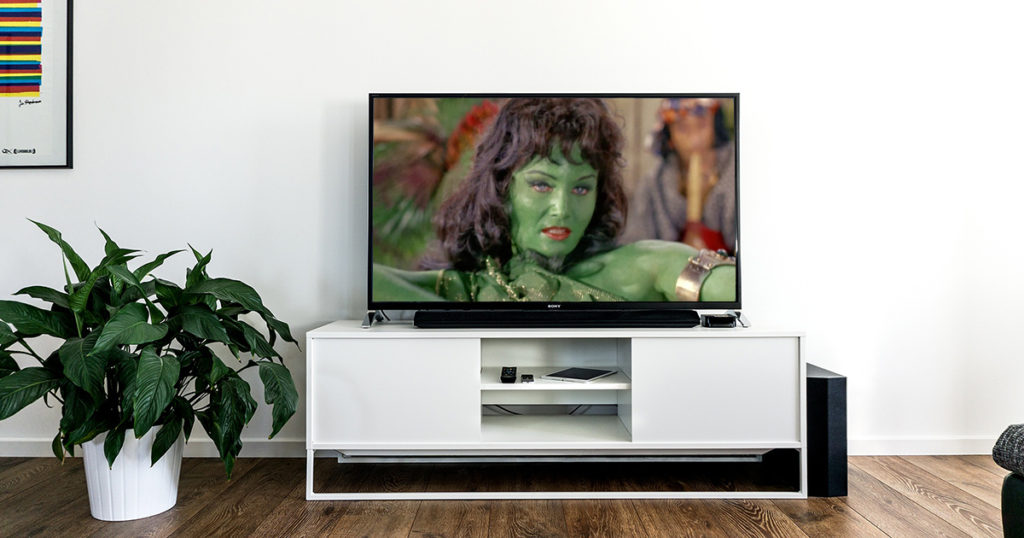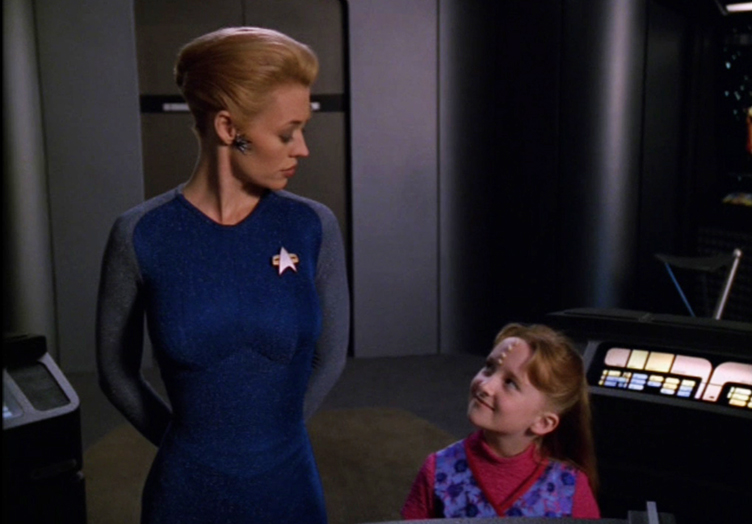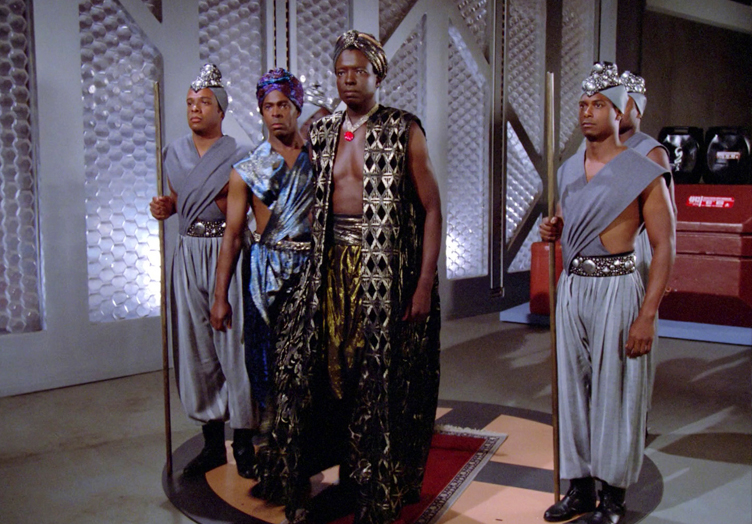
Believe it or not, watching TV with a feminist lens can be fun, and it doesn’t have to be hard. When it comes down to it, it’s just critical thinking – asking questions about the media you’re looking at.
If we aren’t looking at media critically it can exercise undue influence on our views about people from different backgrounds, on what products we choose to buy, and on what behaviour we consider appropriate or inappropriate.
For example media can encourage us to feel insecure about our looks because we can’t live up to the beauty ideals in ads. Or it can show us new possibilities for our future, like Star Trek often does.

When someone critiques representations in media, it’s not about hating on your favourite show. In order to critique something to the level that me and my Women at Warp co-hosts do with Star Trek, you really have to love it and care about it enough to think it’s worth your time to try and change it for the better.
So what do I mean by feminism? I operate from bell hooks’ definition of feminism as “a movement to end sexism, sexist exploitation and oppression.” I also believe that we can’t achieve equality for all women without addressing concurrent forms of inequality and discrimination, such as racism, homophobia, trans phobia, ableism and classism. That influences the types of questions I ask and how I interpret the messages I see on TV, about Star Trek in particular.
Here are the types of questions I ask when I’m doing feminist media analysis.
General Questions:
- Who are the main characters? What are their demographics (gender, race, age, sexual orientation)?
- Do any of them have unique abilities or disabilities (e.g. Troi’s empathic abilities or Geordi’s blindness)?
- What are their major character traits and what are their interests and hobbies? Do those reinforce or challenge stereotypes about their gender, race, etc.?
- How much power do they have as individuals and within their intimate relationships, social group, workplace or organization?
- How is their wardrobe used to define them?
- How does a character change and evolve over the course of a series?
- Watch the background of scenes. How diverse are the extras?
- Do any of the characters or plot lines embody tropes and do particular tropes show up repeatedly? According to TVTropes.org: “Tropes are devices and conventions that a writer can reasonably rely on as being present in the audience members’ minds and expectations.” Tropes are not necessarily bad, but several (e.g. the “Damsel in Distress”) are problematic, especially when used repeatedly.
- Who is the intended audience? What assumptions does the content make about their interests?
- Who created the show and why? Who is paying for it and who is materially benefiting from it?
- How does the show and how do particular scenes make you feel? How might someone from a different background feel while watching? For example, how might someone who has experienced sexual assault engage with a show like Law and Order: SVU differently than someone who hasn’t?

The Ligonians in “Code of Honor”
Star Trek-Specific Questions:
- Are there cultures who are acting as a stand-in for or drawing from stereotypes of a real earth culture (e.g. the Ligonians in “Code of Honor” borrow heavily from negative stereotypes about black/African cultures)?
- What does the show tell us humanity can achieve? Is that future more limited for any groups of characters?
- When the characters travel back in time to Earth history, what cultures are represented and what ones don’t we see?
- Which aspects of today’s society do the show’s creators seem to expect will persist into the 23rd and 24th centuries?
- Does Star Trek merchandising cater to particular demographics? How does it represent the women characters, characters of colour, etc.?
The Bechdel-Wallace Test
The Bechdel-Wallace Test is a simple measure developed by Liz Wallace and popularized by her friend Alison Bechdel in her comic Dykes to Watch Out For. In order to pass the test a movie must have 1) Two women characters; 2) who talk to each other; 3) about something other than a man. It is not a test of feminist representation, but if a piece of media can’t even make it past this most basic of standards, it’s a sign something may be limited in the way women characters are portrayed. You can read more about the Bechdel-Wallace test and how I’ve applied it to Star Trek in this article at The Mary Sue.
That gives you a pretty good idea about what I’m looking out for when watching and reviewing Star Trek. I’d love to hear if you have questions to add to the list!
A version of this post originally appeared at trekkiefeminist.tumblr.com. Cross-posted with permission. Photo modified from original by Jens Kreuter, CC-0 licensed via Unsplash.
I’ve seen some pretty cool merch on some sites that isn’t sexist, such as pyjamas, notebooks and T shirts. There was one that said “Princess? I’d rather be a starship captain” and I have a TOS science mug at work.I couldn’t believe the female character aprons, I’d seen gender neutral ones you could even customise that I liked better.
What annoys me is that there are fewer choices for costumes if you are a woman who cosplays unless you have loads of money. I love my gold TOS uniform, red Kelvin uniform and blue TNG jumpsuit but if I want a DS9 or VOY costume it’s harder to find. With the Kelvin uniforms, virtually impossible to get command gold and could only get a red Beyond dress. More female characters and especially in command please!